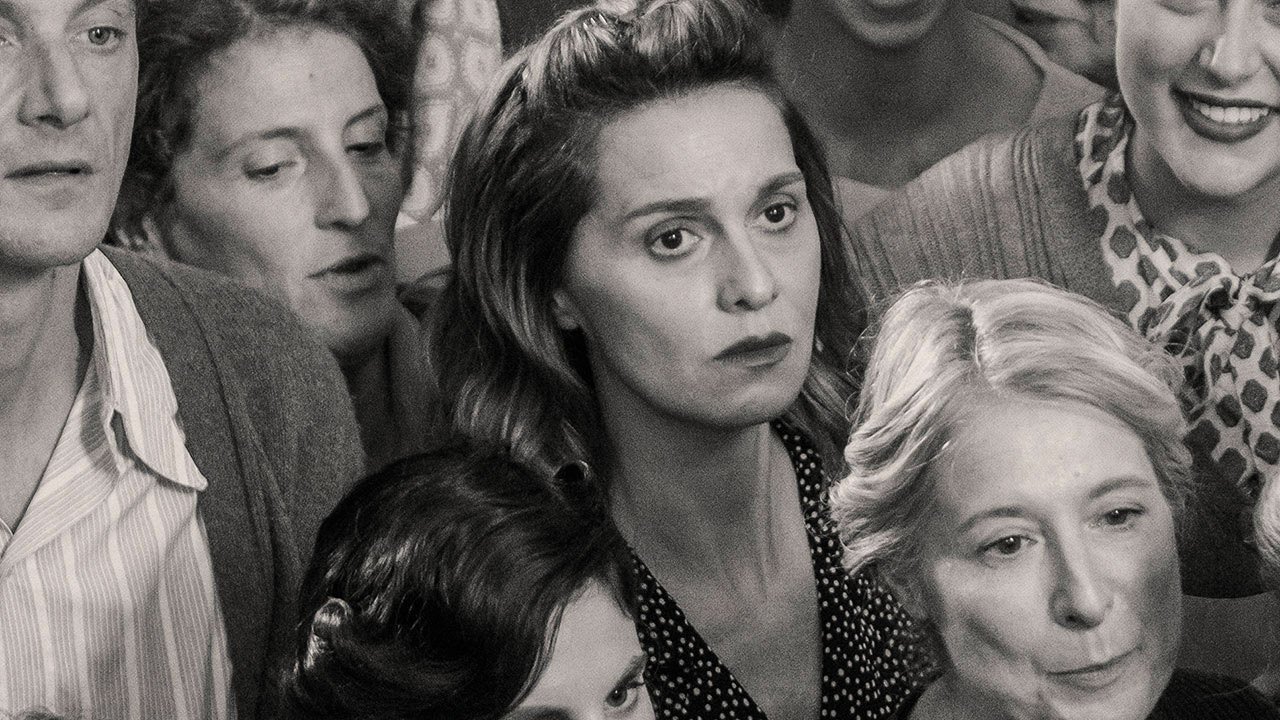Paola Cortellesi’s first work as a director gathers receipts and recognition. But it’s not just a matter of numbers: “There’s Still Tomorrow” is a film that does see Delia as the protagonist, but through her speaks to us about all the women (but also men) of the world, looking back and predicting the struggles for us. rights and their achievements. Achievements that should not be taken for granted but that we must continue to practice in order to regain hope.
Maria Concetta Tringali
There’s still tomorrow is the first project of Paola Cortellesi, a director in excellent form. In cinemas from October 26 this November 25th it is already a ticket record, having surpassed the ceiling of twenty million euros. With over seven million viewers, the film is the golden ticket for 2023. But it is not only the tickets, the story directed and directed by the actress can convince and move.
As the opening credits roll, a force of attraction captures the viewer, with the taste of rewriting. We are one step before the end of World War II. It looks Rome, an open city, looks like neorealism. The story begins to unfold gradually. A multitude of narrative levels will be offered to as many levels of reading, the same that life is ultimately capable of.
In black and white, the film opens in a Roman interior. Delia gets out of bed. A slap in the face wakes her up.
Looking at her as she opens the windows to the new sun, from the bottom where she lives with the whole family, one cannot help but think of Anna Maniani. But there are other masterpieces inside, there is Scola and A certain day. You can feel the delicacy of the cameo, which is a memory free from nostalgia.
Paola Cortellesi’s physicality is the first detail to emerge from the screen. The actress has become an abused, thin, thin, sloppy woman. He has black eyes and the ready downward gaze of someone accustomed to enduring an unspeakable normality. Delia is his wifeAnd his motherMoreover his bride. She has a role granted to her by marriage, she exists only by that: her life is reduced to a function. Poverty is a very clear chiaroscuro: the white tablecloth, perfectly ironed, is a Caravaggio-like flood of light.
Around her, the seed of violence repeats itself and passes through generations: the abusive husband (Valerio Mastadrea), the harassing father-in-law (Giorgio Colangeli) and the two little boys who are ultimately the portrait of their father and grandfather. Witnessing violence – as we know – creates monstrous models: through assimilation or through absorption. And then there’s Marcella, the teenage daughter who seems destined to turn her life around. She is waiting for a marriage proposal from Giulio that is worth much more than a promise. However, the urbane and well-dressed young lad soon reveals himself to be much more like the men underneath than meets the eye. Halfway through the film, the poignancy of a seemingly immutable fate already hovers over the screen.
Delia is a “package” woman, she works inside and outside the home. she has no right to the compensation she renders to her husband as one pays off debts, not without having first stolen the change to set aside for Marcella’s wedding dress. They will return, as a safe conduct, as a pass, this money.
The chorus of characters is a sample of humanity that gives Delia an unpredictable centrality. She is the ultimate star.
The messages that start from the story, one frame after another, are the undercurrent that makes the film a necessary work, the re-diagnosis of the world that we so desperately needed.
And the film speaks to us. He explains to us what it is gender gap, when Delia teaches the young man in the shop how to sew an umbrella. He recognizes the difference in the pay of the two, which is neither fair nor justified, and which therefore must denounce, in words of awareness and response, struggle.
The story unfolds from the underbelly of the suburbs to the good parts of the city, first liberated and immediately occupied by the Americans.
If we wanted to look for the common thread in Cortellesi’s work, we would surely find it in violence that comes out as it is, transversely. There is no identity of the executioner: rich or poor, ignorant or cultured. the world is not yet for women, if in the third millennium there are over a hundred femicides a year.
That is, Ivano’s violence Freemoves by one cyclic dynamics always the same and makes the protagonist – at least technically – one victim. But Delia is not only that. This can be understood from the dialogues that, in time, are reconstructed with this network of stereotypes which has enveloped everything for millennia.
The difference between men and women is a tug of war. Gender asymmetry is a question of power. It is the marginalization of existences: repressed, crushed, normalized lives. Delia’s irony (being “the one who talks a lot”), her sarcasm, sink more than punches. More than slaps, dodged and then caught, openly. There is no normalization to the protagonist who may be bending, but without breaking.
The violence, told without rhetoric, is pure, Piranthelian drama. Delia sublimates the blood and bruises, streams of pain appear on her face for a moment and then magically disappear. The film moves on the thread of symbolism. While she is being beaten, the protagonist is already out of her body, her mind elsewhere. A blind force pulls her to the center of the room, then pushes her back to the edges, pushes her away. slams on doors, crashes on edges: the choice of choreography is a liberating dance. Delia is pulled into that stage of terror by her hair. It wriggles, goes soft, then gives up on itself. the sound is a silence overflowing with the notes of a macabre tango.
We are witnessing helplessly, from the auditorium seats, a balancing act that we know many of us have (and still are) experiencing. Far but very close, the spectators are Delia: how many grandmothers, mothers, friends, how many sisters of each of us meet in the dining room of that ancient Rome. There are the partisans, who did not hold back when they had to risk their lives for liberation from Nazism, there are the first electricians. There are the founding mothers. Film is a bridge between who we were and who we are. And the end is an escape route that plans the only tomorrow worth living: a collective tomorrow that restores the dignity of rights to every individual. No one is saved alone and it is not within the couple that the woman must find rebirth: Freedom is the only salvation and its pursuit is a civic duty.
Maybe we don’t know enough, but we owe a lot to Paola Cortellesi: she gives us a story that could reveal to us where we are wrong, what we are missing. It would be enough to understand this to stop at the edge of the abyss, a moment before the cliff you can avoid the fall.
For the recording it is an initiation: it has put on stage all the women of the world as well as all the men. Thinking about it, we know full well that Ivano will remain the master of Delia in every corner of the country for a long, long time to come. It will take Parliament (which on June 2nd is only in gestation) to get the first laws of civilization to arrive: divorce, abortion, family law reform. Delia will have to wait until her seventies to learn that she is a person within this fiery core of prohibitions, which only her master father makes untouchable. With the decline of parental authority, finally, from the depths of the family we will see individual rights emerge and individuals rise to the surface. The 1980s will eliminate honor killings.
This work is a precious piece of our history, at the center there is only one thing and there are many: at the center there are rights, there is democracy, there is the price of an equality that is long in coming. Even the soundtrack is the only real one: from Lucio Dalla to Daniele Silvestri, every track is a piece. The film is dense, rich. Scattered quotes piece together the life we’ve lived: the death of Delia’s father-in-law is inappropriate, it’s always wrong, and it should be kept locked up. The tribute to Pietro Germi (who in Adrift and abandoned causes Vincenzo Ascalone to suffer the same fate) is very clear.
But Cortelesi’s film is also powerful because it is a pit of symbols. Four thirds is the form of silent cinema, as silent are its lips: with her mouth closed, Delia prepares to make a revolution, with a pencil in his hands. It’s his first time, but it’s ours too. We are there with Delia, that day in June, we who, like her, were able to vote late and who today stopped going to the polls. Reclaiming Delia’s desire and awareness is an effort that will help us restore hope.
Did you like this article?
To continue bringing you quality content, MicroMega needs your support: DONATE NOW.



